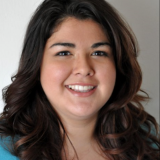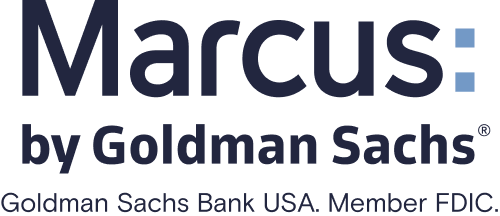How to Choose a Bank
Rates, fees and easy access to customer support are just some factors to consider when choosing a bank.

Many, or all, of the products featured on this page are from our advertising partners who compensate us when you take certain actions on our website or click to take an action on their website. However, this does not influence our evaluations. Our opinions are our own. Here is a list of our partners and here's how we make money.
Your bank should fit your money needs. Not every banking institution has the same fees, interest rates, services or even types of accounts, so it’s helpful to compare the details that matter to you. Here are steps for choosing a bank.

1. Understand the types of bank accounts
A bank is like a buffet: It has a lot to offer, but you don’t need everything. Start by considering your banking needs. Banks provide accounts for managing and saving money as well as credit cards and loans such as mortgages. Here’s a look at the two most common bank accounts:
Checking accounts are for everyday spending. You can make purchases with debit cards, pay bills, send money online, withdraw cash at ATMs, write checks and more.
Savings accounts are for short-term savings and earning interest. Banks can limit the number of withdrawals per month. Typically, money in this account might be used within five years while long-term savings, such as for retirement, are better for investing.
Beyond that, there are two other types of savings accounts:
Certificates of deposit are for protecting a sum of cash earmarked for a big purchase or investment within five years. CDs lock up the sum for a fixed term at a fixed rate. CDs traditionally have the highest rates among bank accounts.
Money market accounts are for saving money and typically have more withdrawal options than regular savings accounts. Some MMAs offer check-writing abilities or debit cards for ATM access, so you can save and access funds fast in emergencies.
Forbright Bank Growth Savings

4.25%
$0
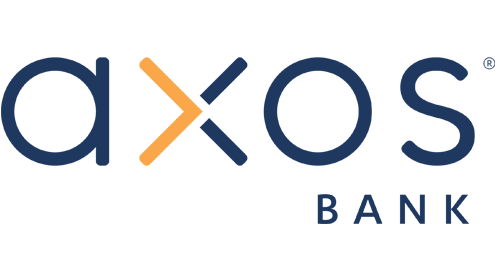
Member FDIC
Axos ONE® Savings

4.66%
$1,500
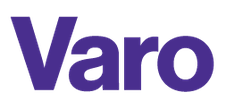
Member FDIC
Varo Savings Account

5.00%
$0
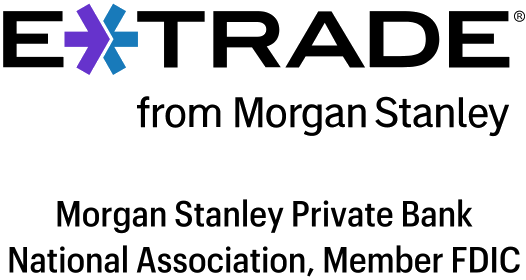
Member FDIC
E*TRADE Premium Savings

4.00%
$0
» Ready to compare? See the Best checking || Best savings || Best CD rates || Best MMAs
If your banking isn’t just for you, ask yourself these questions:
Personal or business bank accounts? If you spend or accept money as a business, you’ll want to open a business account.
Individual or joint accounts? If you plan to share ownership of checking or savings accounts with someone else, such as a spouse, you’ll want joint accounts.
Remember that you don’t have to stick to one bank for all your accounts, or decide to have just one of the same account type. Having multiple savings accounts at different banks, for example, could be strategic if you use them for different reasons and can avoid fees.
» See a full list of what accounts and loans banks offer
» Want to take a quiz? See what bank is best for you below (or read full quiz instructions here)
2. Know what banking experience you want
Banks come in different sizes and structures. A bank down the street, a bank exclusively online, a not-for-profit organization and a tech company with a mobile app can all be a home for your money needs. But they’re not all built the same or prioritize the same aspects of banking, so compare their strengths and shortcomings. Here’s a list of the broad types of banking institutions:
National banks.
Regional and community banks.
Credit unions.
Online banks.
Neobanks.
» Ask a Nerd and find out the signs that you need a new bank

National banks
Size has its perks. These banks have the widest range of accounts and loans, along with generally high-quality mobile apps and websites. Most national banks are brick-and-mortar institutions, as opposed to online-only, so in-person needs can be met through their ATM and branch networks across many states. But checking and savings accounts have drawbacks: There can be monthly fees if you don’t maintain a minimum balance, savings rates are some of the lowest, and overdraft fees can be high. (See the largest U.S. banks.)
Regional and community banks
These banks are smaller than national banks and tend to focus on specific geographic areas where they have branches and ATMs. They’re generally recognized for relationship-based banking, especially for mortgages and small-business loans. A fair number of these banks (along with credit unions) are community development financial institutions, or CDFIs, which are certified in their missions to focus on serving low-income communities. Regional and community banks may lack the latest technology for online or mobile banking.
» MORE: What is a regional bank?
Credit unions
These not-for-profit equivalents to banks emphasize personalized support and higher savings rates, on average, than traditional banks. Credit unions have membership requirements; some are easy to join through a one-time donation to a nonprofit while others require you to live or work in a specific region. Like community banks, they may fall short on having the latest tech. (See the best credit unions.)
Online banks
Internet-based banks tend to have the highest rates for savings and CDs, and no monthly fees. Most have solid mobile app experiences. But online banks don’t have everything: Most have no branches or cash-depositing ATMs, and you won’t find all types of accounts or services, such as international wire transfers or cashier’s checks. Some online banks have only savings accounts and no checking, or vice versa. (See the best online banks.)
Neobanks
Neobanks are financial technology companies that aren't banks themselves. Instead, they partner with banks to offer internet-based banking accounts with federal deposit insurance. Most of them focus on checking accounts, some of which also have savings features, and still others have loans or credit-building tools. Like online banks, they don’t have branches, and many lack specialty banking services such as wire transfers and cashier’s checks. Neobanks can have certain tech features that other institutions often don’t, such as early access to direct deposits. (See 13 neobanks’ offerings.)
3. Pick your must-have features
You likely won’t find the best of everything at one institution. For example, it’s rare to see an online bank with branches, a national bank with competitive savings rates, or a credit union with the latest mobile app technology. To set expectations, consider what features or services you can’t do without. Here’s an overview of general patterns across types of banking institutions:
Type of institution | Best for: | Not best for: |
|---|---|---|
National bank |
|
|
Regional or community bank |
|
|
Credit union |
|
|
Online bank |
|
|
Neobank |
|
|
Disclaimer: This table shows general patterns. Individual institutions vary. | ||
» Learn more about how to set up your bank accounts across banks
Click on any feature or service to jump to that section below:
Wide range of accounts
Where to look: National or regional bank. If you want your bank to be a one-stop shop for all financial needs and services, including business banking, a national or regional bank might be the way to go. But choosing this convenience may mean missing out on the highest savings rates or the lowest fees, among other things.
Low checking fees
Where to look: Online bank, credit union or neobank. These institutions generally offer checking accounts with low to no monthly maintenance fees, no minimum balance requirements and no overdraft fees — which can cost $35 at a national bank. Overdraft fees are among the most expensive fees a checking account holder can pay.
High savings and CD rates
Where to look: Online bank or credit union. Since online banks don’t maintain branches, they have lower overhead costs and can use some of that savings toward higher rates on regular savings accounts, CDs and money market accounts than you can find elsewhere. Rates are usually stated in terms of annual percentage yields. As not-for-profits, credit unions give back to their members in the form of certain benefits including higher APYs than average compared with traditional banks. Some credit unions have rates competitive with online banks.
Branches near you
Where to look: Varies. If you know you’ll need branch access regularly, decide what’s the farthest distance you’d be willing to travel and narrow down from there. Will you need to find a branch while traveling out of state? You can find banks and credit unions in urban and rural areas. National banks generally have huge networks in major cities nationwide. Sometimes smaller institutions are the only physical banking presence in a rural community. Credit unions aren’t known for big branch networks individually, but more than 1,600 credit unions are part of the Co-op Shared Branch network, meaning you can conduct certain transactions at any branch within the nationwide network. If you're in school, you might want a bank with a nearby branch, but other factors may affect how to choose a college bank account.
Big fee-free ATM network
Where to look: Most institutions, but breadth of ATM services varies. Most types of banking institutions offer free access to national ATM networks, but the number of ATMs is not the only thing to compare.
For easy-to-spot ATMs and check-deposit abilities: National banks. National banks have their own branded ATMs, and these ATMs may include services such as cash and check deposits.
For the most places to withdraw cash: Credit unions, online banks or neobanks. These three institution types typically offer their customers free access to one or more shared ATM networks under brands such as Co-op, Allpoint and MoneyPass. Cash withdrawals are available, but generally cash or check deposits are not, unless a bank agrees to that as an add-on service. The ATMs themselves tend to be at various retail locations such as 7-Eleven, Target or Walgreens but can be hard to spot since they aren’t branded by color or logo to match your bank.
Specialty banking services
Where to look: Bank or credit union with branches. You might end up needing banking services that are mainly available at brick-and-mortar banks and credit unions. If your main concern is depositing cash, there are ways to deposit cash at an online bank. Beyond that, landlords, wedding vendors, home repair contractors and others might take only paper checks, cashier’s checks or other physical payment that aren’t always options at online banks. Or you might need to use a specialty service such as an international wire transfer or safe deposit box. (Learn more about whether you can give up a branch-based bank.)
Special perks: Cash back or budgeting tools
Where to look: Neobanks. If you are a digital native or otherwise comfortable doing your finances almost entirely on the web, neobanks can be a solid option for low to no-cost banking with perks. Many neobanks offer two-day early access to direct deposits, and some have subaccounts for multiple savings goals or accounts for building credit.
Mobile apps
Where to look: National banks, online banks or neobanks. Check the Google Play and Apple App stores for Android and iOS bank apps, respectively. These can be helpful third-party sources for star ratings and reviews from a bank’s customers, and to see how they react to the apps, plus visuals and descriptions of the features. If you see fewer than 20 ratings and the institution has been around for a while, it’s probably safe to say that the bank is not prioritizing its apps. Community banks and credit unions may not have the most up-to-date technology on mobile apps.
Community-focused support
Where to look: Credit unions and community banks. Credit union memberships can be restrictive, but they can provide a way for a credit union to focus on people in a certain region or with a certain type of employer (such as teachers or military personnel). Community banks are generally small enough that they know a particular region well and, like credit unions, can foster closer relationships with residents than a national bank can. Black-owned banks, Native American-owned banks, Hispanic American-owned banks and other minority-owned banks and credit unions address racial inequities in America through more inclusive lending practices. (There are a handful of community-focused neobanks too.)
Social responsibility
Where to look: CDFIs and others.Some banks and credit unions seek to create a positive impact for people and the planet in how they lend and support communities through environmental, social and governance factors. (Learn more about ESG criteria.) Socially responsible banks generally go the extra mile to get a third-party certification, such as Certified B Corporation banks for rigorous social and environmental accountability, members of the Global Alliance for Banking on Values, and CDFIs, which focus on helping low-income communities. Minority-owned banks, in particular, create social impact by providing more mortgages and other loans to people of color than the banking industry does overall.
» MORE: Climate-focused banks find new ways forward with clean energy financing
Banking safety
Where to look: Most institutions. (Neobanks have more risk.)
FDIC insurance: Traditional and online banks have bank accounts federally insured through the Federal Deposit Insurance Corporation and credit unions have equivalent protections through the National Credit Union Administration. This safeguard ensures that you get up to $250,000 of your money back if an institution goes bankrupt.
Card protections: Debit and credit cards in the Visa and Mastercard networks — which many banks use — have purchase and fraud protections.
A physical location for peace of mind: Maybe a branch is like a fire extinguisher to you: You don’t know the next time you’ll use it, but it’s there in case of an emergency. Perhaps your bank’s website or app has an outage or you have a check too large for your bank app’s mobile check deposit and the phone lines are busy. Or maybe you want face-to-face interaction for a sensitive issue such as refunding an overdraft fee.
More risks at neobanks: Many launched within the past decade and don’t have an established track record. Their services or fees (or lack of fees) may change over time. In addition, neobanks have FDIC-insured accounts through their partner banks, but FDIC insurance only kicks in if a neobank's partner bank fails, not if the neobank fails. If a neobank goes bankrupt, customers may not receive some or all of their money back in a timely manner. Learn more about what happens if a neobank fails.
4. Compare similar options
Once you know your must-haves, start building a list of institutions that fit what you’re looking for. Look at reviews of banks, credit unions or neobanks to get a close look at the pros and cons of each one. See a list of dozens of bank and credit union reviews.
If you have bank accounts already, the process of switching banks can have some hurdles, but it can be rewarding, especially to take advantage of better rates or lower fees.
If you’re focused on high rates and low fees, you might begin your comparisons by looking at the best. Here are some places to get started:
For banks overall:
For savings accounts:
For checking accounts:
For CDs:
For other banking accounts:






